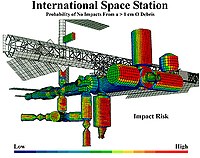
Photo from wikipedia
BACKGROUND Diabetes mellitus (DM) is a well-established risk factor for active tuberculosis (TB) infection. Despite the worldwide rapid increase in the prevalence of prediabetes, its impact on the risk of… Click to show full abstract
BACKGROUND Diabetes mellitus (DM) is a well-established risk factor for active tuberculosis (TB) infection. Despite the worldwide rapid increase in the prevalence of prediabetes, its impact on the risk of active TB remains largely unknown. This study aimed to investigate the relationship between prediabetes and risk of active TB in a large cohort study. METHODS A total of 119 352 participants were screened from a community-based health screening programme in Northern Taiwan. Diabetes mellitus and prediabetes were defined by baseline fasting plasma glucose (FPG) and prescription of anti-diabetic drugs. Incident cases of active TB were identified from the National Tuberculosis Registry. Kaplan-Meier curves and Cox regression analysis were employed to estimate the hazard ratios for prediabetes and DM compared with normoglycaemia. Spline regression was performed to investigate the dose-response relationship between FPG level and risk of TB disease. RESULTS At baseline, 27 404 (22.96%) participants had prediabetes and 10 943 (9.17%) participants had DM. After an average follow-up of 7.2 years, 322 TB cases occurred. The adjusted hazard ratio of developing active TB disease was 0.73 [95% confidence interval (CI) 0.55-0.97] for prediabetic and 1.48 (95% CI 1.11-1.98) for diabetic participants compared with normoglycaemic individuals. Spline regression revealed a U-shaped association between FPG level and risk of active TB disease, with the lowest risk at FPG around110 mg/dl. Sensitivity analyses were conducted to exclude factors such as potential confounders (including body mass index), misclassification of glycaemic level, and selection bias, and results showed that those factors could not explain the lower risk of active TB. CONCLUSIONS Prediabetes was associated with a 27% reduced risk of active TB disease compared with normoglycaemia. The biological mechanism of this inverse association and its implication for global nutrition transition and TB control should be further investigated.
Journal Title: International journal of epidemiology
Year Published: 2022
Link to full text (if available)
Share on Social Media: Sign Up to like & get
recommendations!